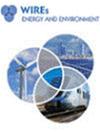超级电容器的自放电。第二部分:影响因素和缓解措施
IF 5.4
3区 工程技术
Q2 ENERGY & FUELS
引用次数: 0
摘要
超级电容器已成为推动储能系统和高能效设备中绿色能源技术发展的驱动力。超级电容器能够以高电流密度和长循环寿命快速获取和输送电荷,这一点至关重要。然而,其较高的自放电率阻碍了其在广泛应用中的潜力,尤其是在使用常见的活性炭电极时。由于缺乏对放电过程的全面了解,解决这一瓶颈问题受到了阻碍。在这篇综述中,我们全面回顾了影响超级电容器自放电的因素(温度、初始电压、充电条件、历史、官能团、孔隙几何形状和存在的杂质),以及文献中对缓解自放电的尝试(电极、电解质和分离器改性):新兴技术 > 储能本文章由计算机程序翻译,如有差异,请以英文原文为准。

Self‐discharge in supercapacitors. Part II: Factors influencing it and mitigation
Supercapacitors have emerged as drivers for the advancement of green energy technologies in energy storage systems and energy‐efficient devices. Their ability to rapidly acquire and deliver charge at high current densities and long cycle life is key. However, their high self‐discharge rate prevents their potential use in a wide range of applications, especially when utilizing commonly available activated carbon electrodes. Addressing this bottleneck is hindered by the lack of a comprehensive understanding of the discharge process. In this review, we delve into a comprehensive review of factors (temperature, initial voltage, charging conditions, history, functional groups, pore geometry, and the impurities present) that influence self‐discharge in supercapacitors and attempts made in the literature on its mitigation (electrode, electrolyte, and separator modification).This article is categorized under: Emerging Technologies > Energy Storage
求助全文
通过发布文献求助,成功后即可免费获取论文全文。
去求助
来源期刊

Wiley Interdisciplinary Reviews-Energy and Environment
ENERGY & FUELS-
CiteScore
11.70
自引率
3.30%
发文量
42
期刊介绍:
Wiley Interdisciplinary Reviews: Energy and Environmentis a new type of review journal covering all aspects of energy technology, security and environmental impact.
Energy is one of the most critical resources for the welfare and prosperity of society. It also causes adverse environmental and societal effects, notably climate change which is the severest global problem in the modern age. Finding satisfactory solutions to the challenges ahead will need a linking of energy technology innovations, security, energy poverty, and environmental and climate impacts. The broad scope of energy issues demands collaboration between different disciplines of science and technology, and strong interaction between engineering, physical and life scientists, economists, sociologists and policy-makers.
 求助内容:
求助内容: 应助结果提醒方式:
应助结果提醒方式:


